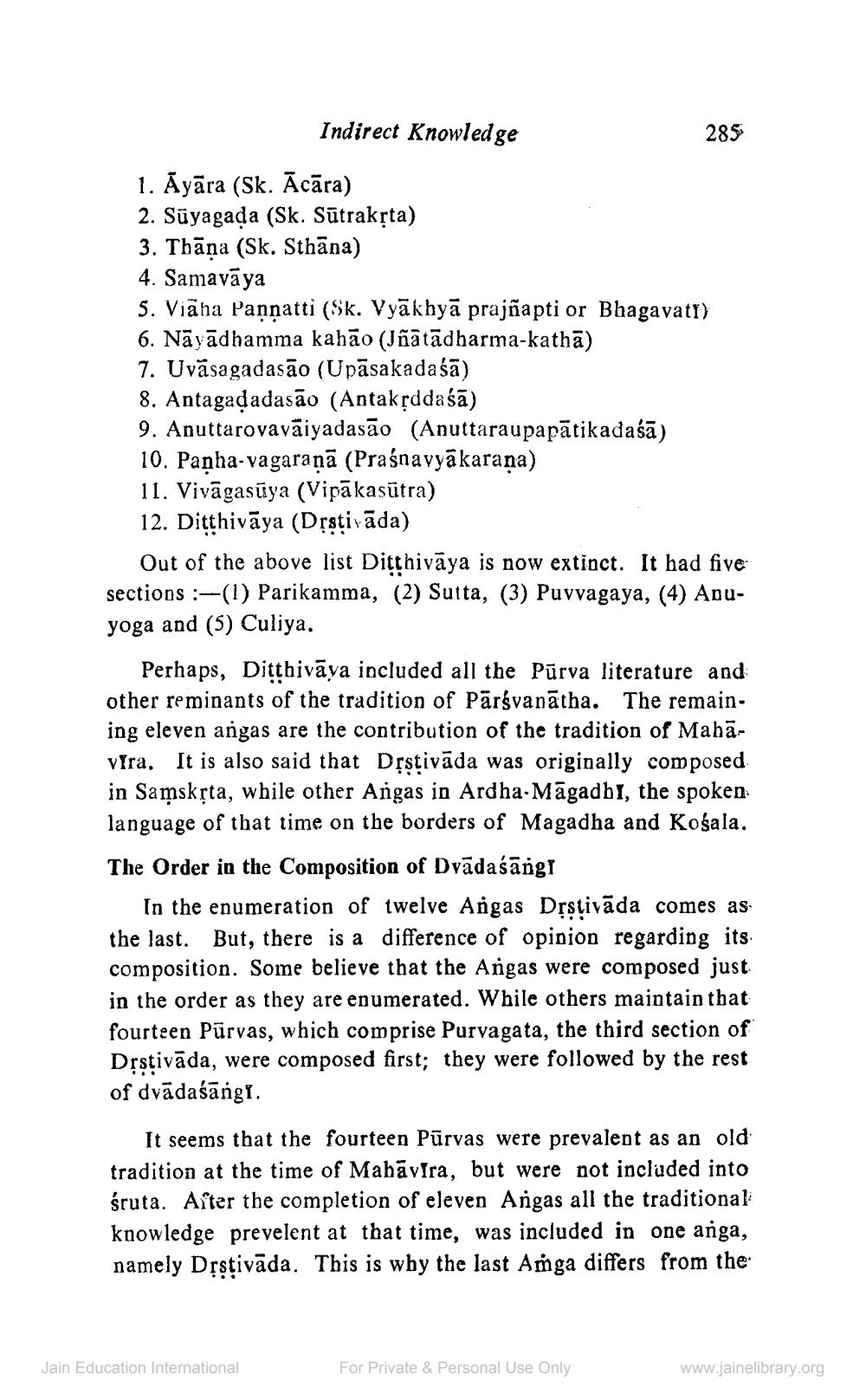________________
Indirect Knowledge
285
1. Āyāra (Sk. Ācāra) 2. Sūyagada (Sk. Sūtraksta) 3. Thāņa (Sk. Sthāna) 4. Samavāya 5. Viāna Paņņatti (Sk. Vyākhyā prajñapti or Bhagavatí) 6. Nāyādhamma kahão (Iñātādharma-kathā) 7. Uvāsagadasão (Upāsakadaśā) 8. Antagadadasão (Antakşddaśā) 9. Anuttarovaväiyadasāo (Anuttaraupapātikadaśā) 10. Panha-vagaraņā (Praśna vyākarana) 11. Vivāgasūya (Vipākasūtra) 12. Ditthivāya (Dșstivāda)
Out of the above list Ditthivāya is now extinct. It had five sections :-(1) Parikamma, (2) Sutta, (3) Puvvagaya, (4) Anuyoga and (5) Culiya.
Perhaps, Ditthivāya included all the Pūrva literature and other reminants of the tradition of Pārsvanātha. The remaining eleven angas are the contribution of the tradition of Mahāvira. It is also said that Dșstivāda was originally composed in Samskrta, while other Angas in Ardha-Māgadbi, the spoken language of that time on the borders of Magadha and Kosala. The Order in the Composition of Dvādaśāngr
In the enumeration of twelve Angas Dșstivāda comes as the last. But, there is a difference of opinion regarding its composition. Some believe that the Angas were composed just in the order as they are enumerated. While others maintain that fourteen Pūrvas, which comprise Purvagata, the third section of Dřstivāda, were composed first; they were followed by the rest of dvādaśangi.
It seems that the fourteen Pūrvas were prevalent as an old tradition at the time of Mabāvīra, but were not included into śruta. After the completion of eleven Angas all the traditional knowledge prevelent at that time, was included in one anga, namely Dșstivāda. This is why the last Añga differs from the
Jain Education International
For Private & Personal Use Only
www.jainelibrary.org




